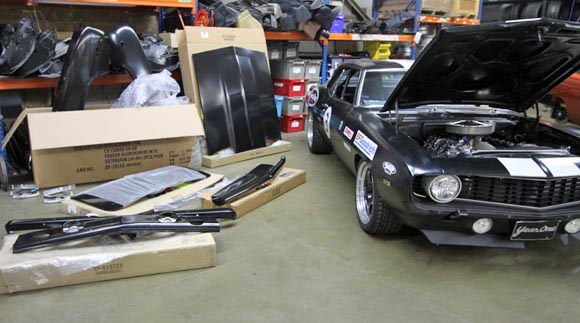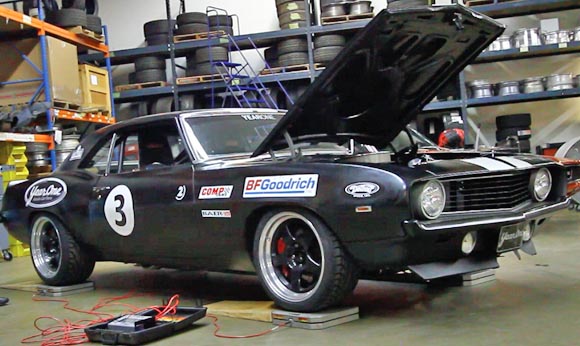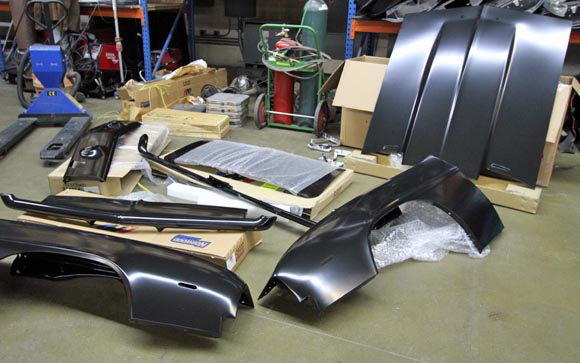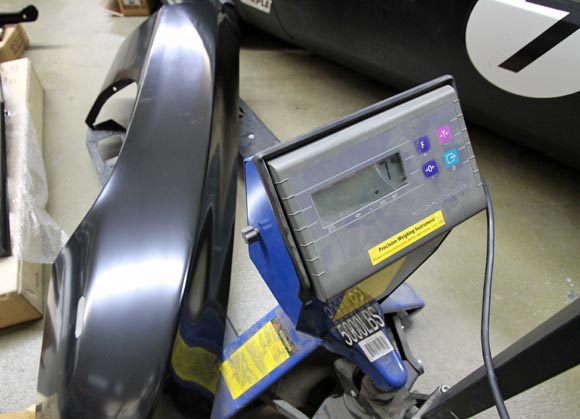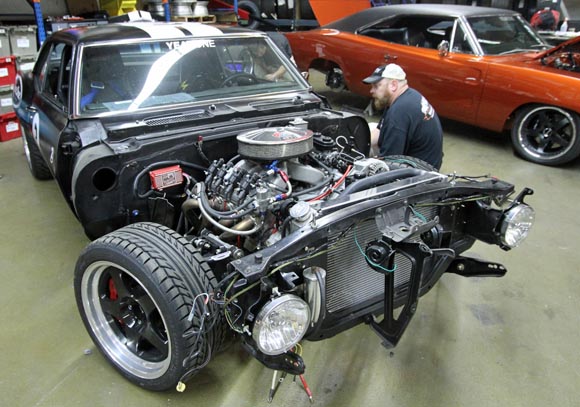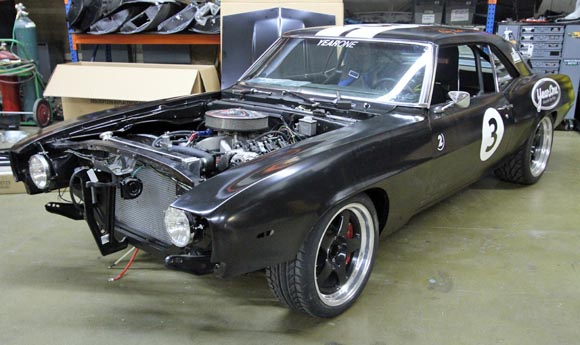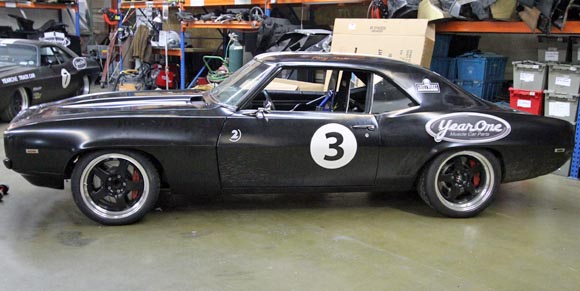Unless you’re talking about your gold stash or possibly that large-mouth bass you just caught, weight is the enemy. Whether on your person, or more importantly on your hot rod, hauling around a bunch of extra pounds will lead to undue stress and lost races. We can live with a little stress, but losing races is just too much for any self-respecting gearhead to endure.
Take our ’69 Camaro track car for example. We’ve been pounding on this car for years now. It’s seen four different engines, three transmissions, two front subframes and two rear suspension systems. With every update the car has gotten faster with better handling – but you know how it is, we want more. And to paraphrase Sir Colin Chapman, founder of sports car icon Lotus, we’re going to increase performance by adding lightness wherever possible.
Back in the day when the factories wanted to lighten up their special models for competition use they used, among other things, lots of aluminum body panels. This led to legendary factory lightweight cars such as the Z11 Impala and Super Duty Pontiacs, among others. Thanks to the enormous popularity of the ’69 Camaro, the aftermarket has produced a number of aluminum body panels that allow us to give our track car the factory lightweight treatment. That’s right – we’re going old school and will shed some pounds by replacing much of our car’s steel sheetmetal with new aluminum components.
So how much weight can we save by putting the Camaro on an aluminum-intensive diet? That’s the question we set out to answer in this article.
First things first: Just what does the car weigh now? We broke out the scales and loaded up the Camaro – the official “before” weight came in at 3193 pounds with no driver and about a half-tank of fuel.
So now we have our starting weight, we need to list the body panels we’ll be changing. In a nutshell, we’ll be swapping everything we can, including:
Hood
LH and RH fenders and extensions
Lower front valance panel
Front header panel
Rear deck lid
Front bumper
Rear bumper
We thought it would be informative to actually compare the weights of the steel panel or panels to the aluminum versions individually as well. This way you would know how much weight could be saved by swapping just a hood, or bumpers, etc. So we removed the steel components and weighed each one. Once we had those figures, we then weighed the aluminum panels. Results are listed below.
After we stripped the steel panels from the car, we began bolting on the aluminum. We noticed a couple things right off: First, the panels are very light (shocker!) and pretty thin, so it’s quite easy to bend and warp them! Secondly, it’s going to take quite a bit of work to fit these panels. We suspect this is due to the greater elasticity of the aluminum, which means the dimensions of the panels are slightly different from the steel panels after stamping. This isn’t to say an acceptable fit can’t be had with the panels, but it’s certainly going to take some time to get the gaps and body lines agreeing with one another. Of course, since our car is used pretty much exclusively on the race track, panel fit requirements aren’t as stringent as they would be on a show car or nice street car.
With the new panels in place, we rolled the Camaro back on the scales and were rewarded with a total weight of 3074 pounds. Considering our starting weight of 3193, it looks like we took 119 pounds off the car with the aluminum panels and bumpers. Even more important from the standpoint of vehicle dynamics is that most of this weight was removed from the front of the car. Removing weight from the front improves the front-to-rear weight distribution, which was 55%/45% front/rear when we started.
So we’re pretty happy with the results of the Camaro’s aluminum-intensive diet. Of course, the aluminum body panels are more expensive than their steel counterparts, so whether the weight savings offsets the added expense is something best decided on an individual basis. On a car where saving weight is a priority, such as a drag car or road racer, there’s no doubt taking 100+ pounds off the nose is worth it.
And we’re still not done with our car. Now that the body panels have been replaced, we’re doing a few more things to remove weight such as gutting the doors and removing the inner fenders. (Which surprisingly weigh 12 pounds each!) Our goal is to get the car down to 3000 pounds. And by installing aluminum body panels, we’re well over halfway to our goal.
| Starting Weight: | 3193 lbs |
| Ending Weight: | 3074 lbs |
| Total Weight Loss: | 119 lbs |
| Components | Steel | Aluminum |
|---|---|---|
| Hood | 59 | 23 |
| LH Fender w/ext | 29 | 8 |
| RH Fender w/ext | 29 | 8 |
| Valance Panel | 11 | 4 |
| Header Panel | 5 | 2 |
| Front Bumper | 7 | 3 |
| Rear Bumper | 10 | 5 |
| Deck Lid | 32 | 10 |
YEARONE Part Numbers for Aluminum Components
BN975A
2″ Cowl Induction Hood
XRX9LHA
LH Fender with Extension
XRX9RHA
RH Fender with Extenion
K2003A
Front Valance
BN869A
Front Header Panel
B8369FE
Front Bumper
B8369RE
Rear Bumper
C12180RA
Deck Lid

